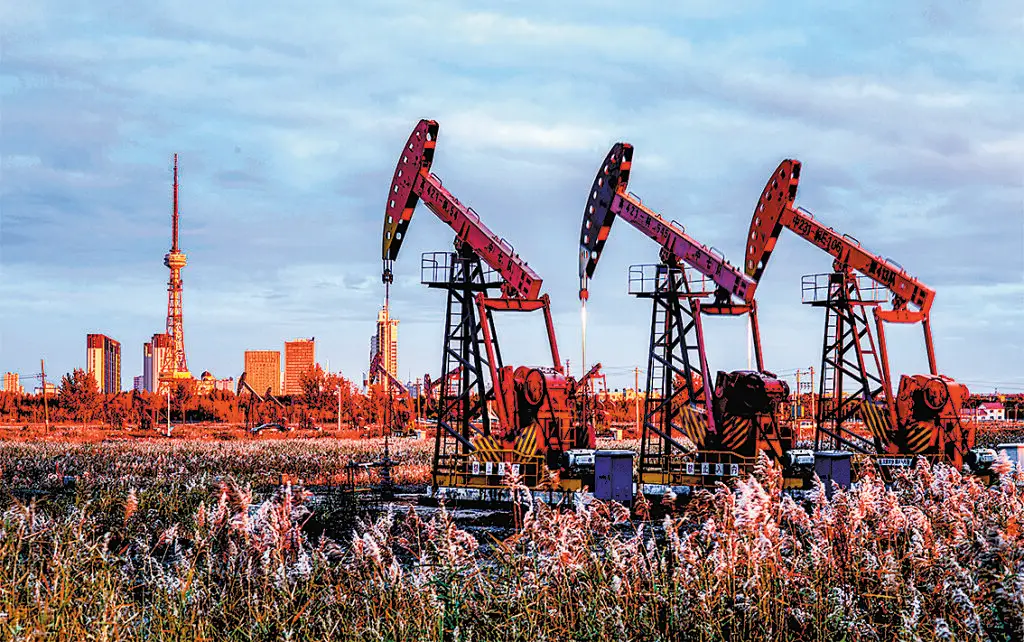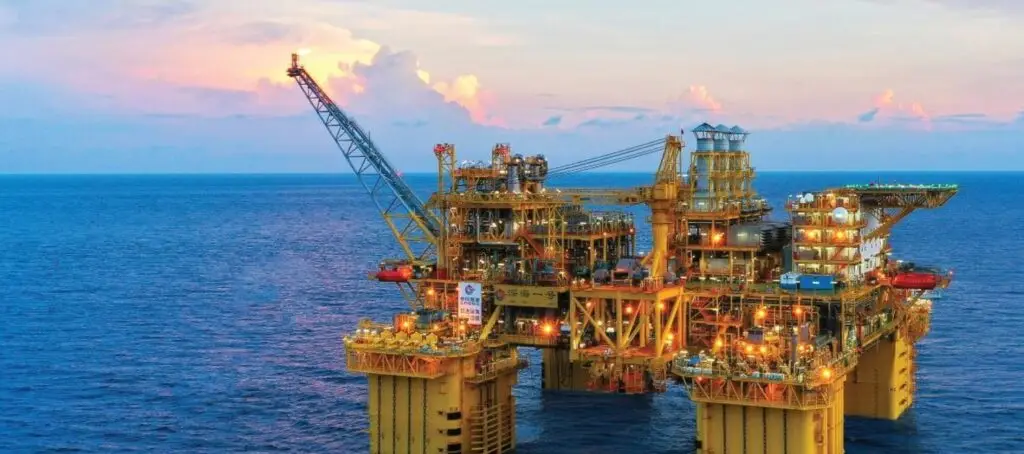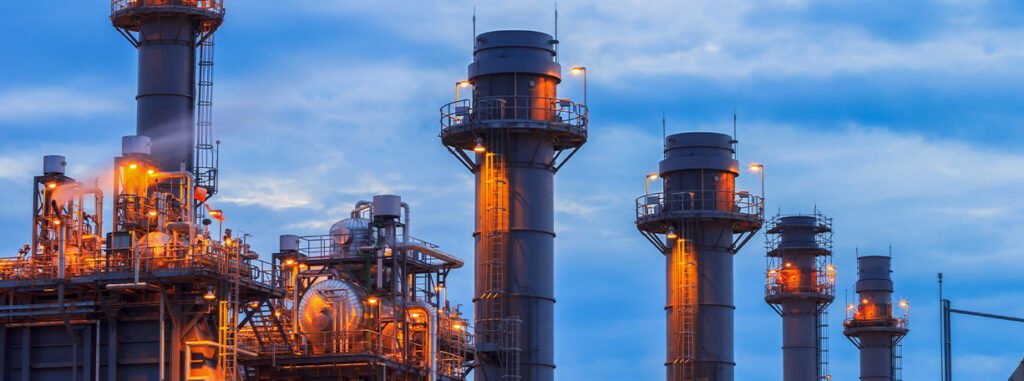China will add 11 new crude oil reserve sites across 2025 and 2026 with total capacity of about 26.8 million cubic meters, roughly 169 million barrels. Three sites are inland in Shaanxi and Yunnan, the rest are coastal. Most are labeled “commercial reserves,” yet they function as emergency stockpiles and together equal about two weeks of China’s current crude import needs. A separate Fujian underground plan proposed in 2021 would add up to 31 million cubic meters if built. Public updates on that project have been scarce.

The Strategic Backdrop
China’s reserve buildout is arriving during a year of persistent stock builds. U.S. EIA estimates Chinese crude inventories increased by about 900,000 barrels per day between January and August 2025, absorbing barrels that might otherwise have pressured prices lower during the second and third quarters.
The pace eased in September. Reuters calculates that China’s year-to-date surplus crude averaged about 930,000 barrels per day for January through September after a slower September intake. This still implies strong structural buying into storage.
The IEA’s October Oil Market Report also points to higher observed inventories, with non-OECD stock builds supported by rising Chinese crude. Taken together, the data reinforces the idea that China’s storage behavior is now a material component of global balances.

Scale Versus Import Reliance
CNPC’s January outlook guided 2025 crude imports to around 11.18 million barrels per day with oil import dependence near 70 percent through 2030. Against that baseline, the 169 million barrels of new capacity covers roughly two weeks of imports. The new tanks are not game-changing in isolation, but they create flexibility to buy opportunistically when arbitrage and flat prices line up.
Why The Location Mix Matters
Coastal sites near large refining hubs are effective for quick line-outs to major plants and for blending medium and heavy grades. Inland sites in Shaanxi and Yunnan improve regional resilience and pipeline balancing. A mixed footprint also reduces congestion at a few coastal terminals during high import months or when weather interrupts discharge schedules.
Market Effects To Plan For
A durable demand floor when prices dip. With more storage headroom, state firms can step in when Brent or Dubai weakens relative to China-delivered economics. EIA’s observation of sustained stock builds through most of 2025 already showed this price-responsive pattern.
Tighter Atlantic-to-Asia arbitrage windows. If China accelerates incremental buying during soft patches, barrels from West Africa, Brazil, and the U.S. Gulf Coast can clear faster, compressing differentials and narrowing VLCC arb windows for other Asian buyers.
Refinery run support. Added reserve space helps smooth crude supply during outages and peak maintenance. That can stabilize refined product exports from coastal complexes, affecting diesel and jet flows across Asia, especially when Singapore cracks are strong.
Operational resilience. Inland capacity can buffer pipeline or coastal terminal constraints and reduce reliance on floating storage during port disruptions.
Practical Implications For Trading, Planning, And Risk
Procurement cadence. Expect more frequent buy-the-dip tenders and term optionality that leverages new tank space. Monitor China’s intake relative to refinery turnarounds and seasonal demand to anticipate marginal pull on medium sour grades.
Benchmark watchlist. Track Dubai structure, Brent–Dubai EFS, VLCC AG–China freight, and delivered-to-Shandong netbacks for signals that reserve builds are turning on or off. The response function is strongest when flat prices soften and freight is benign.
Differential discipline. New storage does not erase quality needs. Urals-like medium sours and Arab grades will remain the backbone for many complexes, but the cushion lets buyers time cargoes to optimize vacuum gasoil and distillate yields without sacrificing sulfur handling limits.
Counterparty and logistics. More reserve capacity raises throughput at terminals and pipelines. Vet laycan reliability and demurrage terms closely. Blending rules and assay matching remain critical for stable product yields.
Macro signaling. IEA’s inventory read and EIA’s build estimates suggest China’s stock behavior has market-level impact. For portfolio hedging, consider that storage-driven buying can blunt downside moves and shorten the lifespan of contango episodes.
How To Read The Next 6–12 Months
Capacity on stream versus fill rate. Tanks do not fill instantly. Use satellite-observed inventories and port lineups to gauge actual draw on seaborne supply. Inventory builds that persist into low-price windows are a stronger signal than construction headlines.
Import mix. Saudi flows to China rose into the autumn on adjusted OSPs. If OPEC+ supply increases meet wider Chinese intake, expect more Middle East medium sours anchoring the slate while Atlantic Basin grades flex with arbitrage.
Policy and data opacity. China is not bound by IEA’s 90-day stockholding rule and publishes limited official data. This increases reliance on secondary measurement and price-action inference. Use multi-source triangulation rather than single-point estimates.

What This Does Not Mean
New storage capacity does not guarantee continuous large stock builds. Fill rates still depend on price, product margins, freight, and refinery utilization. Tanks can also be used to rotate quality, manage blending, or support exports during maintenance at key plants. The signal to watch is the relationship between dips in flat price and the pace of Chinese customs receipts and onshore inventory changes.
Key Takeaways
China plans 11 new oil reserve sites with capacity of about 169 million barrels in 2025–2026, equal to roughly two weeks of current imports. Locations span coastal hubs and inland Shaanxi and Yunnan.
EIA estimates China built crude stocks at about 900,000 barrels per day from January to August 2025, creating a demand floor during price dips.
The build pace moderated in September, but year-to-date surplus intake still averaged about 930,000 barrels per day.
IEA reports global inventories at multi-year highs, with non-OECD builds supported by China’s crude stocks.
CNPC projects 2025 crude imports around 11.18 million barrels per day and import reliance near 70 percent through 2030, framing the strategic need for more storage.

